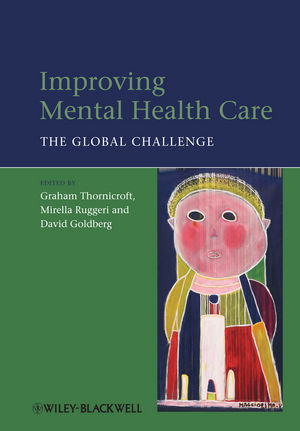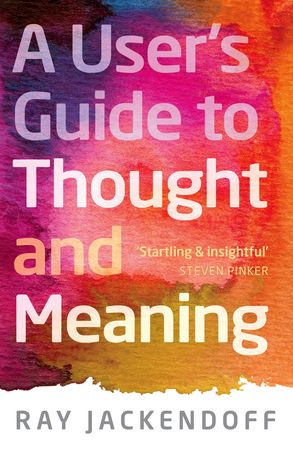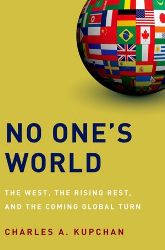
Enlightenment Shadows by Genevieve Lloyd. Reviewed by Joe Sinclair
Improving Mental Health Care, The Global Challenge edited by Graham Thornicroft - Reviewer Elizabeth Winder
Can I Tell You About Adoption by Anne Braff Brodzinsky - Reviewer Michael Mallows
A User's Guide to Thought and Meaning by Ray Jackendoff - Reviewer Joe Sinclair (This is an interim review only. Full and final review will appear in the Book Reviews section of Potential Unleashed No. 7, November 2013 and/or New Nurturing Potential No. 4 of Winter 2013/4)
No One's World by Charles A. Kupchan - Reviewer Terry Goodwin (This is an interim review only. Full and final review will appear in the Book Reviews section of Potential Unleashed No. 7, November 2013 and/or New Nurturing Potential No. 4 of Winter 2013/4)
Enlightenment Shadows by Genevieve Lloyd. Hardback. 192 pages. Price £30.00. ISBN No. 978-0-19-9669956-1 Published by Oxford University Press

I found this review unexpectedly challenging. When I read Dr. Lloyd’s The Man of Reason some years ago I thought it would be a work on philosophy from a feminist standpoint, but found it to be mainly a feminist-based work with a philosophical background.[1] It made nevertheless fascinating and rewarding reading.
On this occasion I anticipated a somewhat similar experience and was misled by the size of the book into thinking it would make easy reading for review purposes. Once again I had deluded myself. Enlightenment Shadows is indeed a work of under 200 pages, but those pages are so wide-ranging and so full of in-depth commentary on the key texts of the major philosophical writers of the period known as the Age of Enlightenment (or sometimes the Age of Reason) that I was quickly disabused of any complacent easy-review expectation.
But before producing my own review, I hope I may be pardoned for reproducing the words of the author herself. In a lecture she gave before the University of Utrecht, Netherlands[2], in May 2011, while referring to the book as a “work-in-progress”, she stated that . . . [the book explores] . . . ‘the interconnection between ideas of the secular, cosmopolitanism and scepticism in eighteenth century texts . . . focusing on Montesqueiu’s fictional travelers in “Persian Letters” and on Kant’s treatment of enlightenment and the future in his political essays. It will explore the bearing of Enlightenment ideals on contemporary understanding of tolerance. The discussion will highlight Montesquieu’s treatment of male power in relation to the organisation of female lives, with reference to contemporary debates on sexual equality framed by the idea of a “clash of civilizations”.’
And herein may be found a clue to my dilemma in starting a review of this book with the mistaken belief that it might have been a continuation of the feminist approach of Dr. Lloyd in her earlier work. Because the description she gave in Utrecht, of Enlightenment Shadows as a “work-in-progress”, seems to suggest that it was originally her intention to give more prominence to feminist issues such as Usbek’s description of his harem in Montesquieu’s Persian Letters.
Usbek has left behind a harem in Persia, in which his wives are kept prisoner by eunuchs who are among his slaves. Both his wives and his slaves can be beaten, mutilated, or killed at his command, as can any outsider unfortunate enough to lay eyes on them. An in-depth commentary on this is lacking in Lloyd’s book, although she does refer to Montesquieu’s “theme of male power over female lives” in the section entitled “Seraglios, real and imagined”. But most of this chapter is given over to the theme of how to know oneself, and how difficult that is. The Persian Letters is a very amusing account via people’s letters of what is happening around them, with Montesquieu pointing out how difficult it is to see yourself as you really are.
I have leapt somewhat ahead of myself here, because although Montesquieu is chronologically the beginning of the Enlightenment period with which Dr. Lloyd is concerned, she actually begins her work out of chronological sequence, in her introduction, with Kant’s definition of Enlightenment. and concludes in Chapter 7 with his Perpetual Peace written during the last decade of the 18th century. One might perhaps infer that she considers Immanuel Kant to have been the most significant figure of the Enlightenment. And although, if this is so, there are those who might disagree with her, no one could dispute the tremendous impact of his Aufklärung in his momentous essay What is Enlightement (1784).
In it he states “Enlightenment is man's emergence from his self-incurred immaturity. Immaturity is the inability to use one's own understanding without the guidance of another. This immaturity is self-incurred if its cause is not lack of understanding, but lack of resolution and courage to use it without the guidance of another. The motto of enlightenment is therefore: Sapere aude! Have courage to use your own understanding!”
A list of the chapters of this book, and the dates of the philosophers to which each is (mainly) devoted, provides a good illustration of how compactly the period of Enlightenment encompasses the eighteenth century, and the relative importance Dr. Lloyd attaches to each.
Introduction – Kant on enlightenment
Chapter 1. Montesquieu -1689-1755
Chapter 2. Voltaire – 1694-1778
Chapter 3. Hume -1711-1776
Chapter 4. Adam Smith – 1723-1790
Chapter 5. d’Alembert and Diderot – 1717-1783 and 1713-1784
Chapter 6. Diderot
Chapter 7. Kant – 1724-1804
Conclusion – looking back on the Enlightenment.
But even before the Introduction, Lloyd provides us with a lengthy prologue, in the course of which she explains the significance of the title. The shadows are the darker elements in the thoughts of the Enlightenment. The uncertainties and instabilities. “It is also meant to suggest something less dark; the insubstantial presence . . . of intellectual processes which were once lively and full of hope.” The shadow may be either benign or malign. “The Epicurean desire to demolish superstition by the force of reason was a strong influence on Enlightenment thought.”
The Enlightenment is “notoriously a concept that lacks clear definitional boundaries”. The readings “aim to bring into clearer focus what was distinctive in the dynamic movements of thought that went into the crafting of the texts.” The texts themselves illustrate “the varying ways in which Enlightenment thinkers enacted . . . the interplay of intellect, emotion, and imagination.”
The major texts and readings are (chapter by chapter) Montesquieu’s Persian Letters, Voltaire’s Philosophical Dictionary, Hume’s The Sceptic, Adam Smith’s Theory of Moral Sentiments, d’Alembert and Diderot’s The Encyclopedia, Diderot’s Rameau’s Nephew, and Kant’s Perpetual Peace.
But do not be fooled by this listing of the more detailed of Dr. Lloyd’s readings into thinking that this represents the unique core of her work. There is so much more to enjoy in every chapter, with the introduction of so many other influences, particularly in her “Conclusion” chapter and – even subsequently – in an “epilogue” to match her Prologue, in which she gives some remarkably detailed commentary on those other influences as a guide to “Further Reading” chapter by chapter.
Of particular interest to me is her description of the writings and criticism of Hannah Arendt,[3] starting in Chapter 7, continuing in the Conclusion, and in some detail in the final section on further reading. In Chapter 7, Lloyd discusses the lectures given by Arendt in 1970 based on Kant’s aesthetic and political writings, and in particular his Critique of Judgement. In her Conclusion she dwells further on Arendt’s concern with judgement and specifically in the context of the Eichmann trial in Israel as revealed in her book Eichmann in Jerusalem. And again, in her chapter on further reading, the author directs us to much of Arendt’s work and the commentaries on it by others. This, to me, rounded off quite nicely the impression I started with, which was supported by her address to the University of Utrecht, that the idea of tolerance and feminism continues to underpin her work.
Altogether a fascinating and elegantly written series of studies. “Emancipation from superstition” says Lloyd in her “Looking Back on the Enlightenment” chapter, and indeed it was, with its large influence on the forces that produced both the American and the French Revolutions. it was society’s breaking away from the intellectual chains of the dark ages.
I recommend it to students of philosophy, of history, and to a general readership.
[1] Genevieve Lloyd is an Australian philosopher and feminist. She was the first female professor of philosophy to be appointed by an Australian university, the University of New South Wales. That was in 1987. Three years previously she had published The Man of Reason – Male and Female in Western Philosophy, conceivably her best-known work, which Lloyd has described as “an overview of the successive alignments between maleness and ideals of reason throughout the history of western philosophy.” On retirement she was appointed Professor Emeritus. She was also Research Associate in Philosophy at Sydney’s Macquarie University.
[2] The events with Genevieve Lloyd are part of the Centre for Humanities lecture series ‘Concerning the Postsecular’ that was initially developed together with the departments of Anthropology and of Theology at Utrecht University. The lectures offer challenging new perspectives on cosmopolitanism, global economics and social sustainability and open the debate of the postsecular condition to larger contemporary social issues about identities, belonging and cultural politics. [Presented in May 2011]
[3] Johanna "Hannah" Arendt (1906-1975) was a German-American philosopher and political theorist.
Joe Sinclair
Improving Mental Health Care, The Global Challenge edited by Graham Thornicroft, co-editors: Mirella Ruggeri, David Goldberg. Hard cover. 462 pages. Price £74.99. ISBN: 978-1-118-33797-4. Publisher Wiley Blackwell.

The book is a collection of articles written as a tribute to the Italian pioneer of community care for mental illness, Michele Tansella, and provides an interesting snapshot of the current global situation with detailed discussion on some aspects of the challenges to be faced. The focus moves onto current research which can improve service delivery, including topics such as service models, treatments, prevention, early identification of conditions, and new interventions. The final two sections cover new research methods and routes to delivering better care in the community. The writers take into account the very different environments, expertise, and funding available for mental health care in different parts of the world, and aim to provide clear guidance on the provision of mental health care both in high- and low-income countries.
While all the contributions are coherent in themselves, when taken together they present some contradictions. The result is a round-up of questions to be answered, rather than the answers themselves, with some contributors questioning what others seem to take for granted. One contributor even questions whether improving mental health care should take priority for funding over decreasing stigmatisation from mental illness – which would have the greatest impact on the patient’s quality of life in low-income countries? Further debate on this topic and other controversial areas could lead to valuable practical outcomes from this book.
To give another example, one contributor shows how the inconsistent results of a randomised controlled trial (RCT) are explained and become useful when the different local contexts of the trial groups are taken into account, others question whether RCTs can be applied at all to complex psychosocial interventions, another describes innovative statistical methods for examining trial results to counter such criticisms, and another argues that the Cochrane hierarchy of evidence used in physical medicine is inappropriate in mental health and should be revised to value qualitative research evidence. What becomes clear, over and over, is a tension between policymakers and funders looking for broad solutions - cost-effective health systems delivering proven interventions, and health workers and patients lacking confidence in the quality of the evidence and doubting that the systems and interventions will be appropriate for their local circumstances.
In the Netherlands there was an interesting result from this tension when health insurers who fund mental health treatments wanted to introduce Routine Outcome Monitoring (ROM) to ensure they could identify the most cost-effective service providers. Patients, families, and patient organisations responded by identifying quality standards as a condition of their acceptance of ROM. This ensured that ROM became an integral part of treatment planning and monitoring, involving both patient and health professional. Its use for comparing service providers is less valid, as the conditions and environments in which they provide treatment are not easily comparable.
Examples of patients themselves taking an active role in their own health care are surprisingly rare in this publication, considering that encouraging this is part of EC health policy and research funding is being directed towards developing ICT support for self-monitoring. Service user initiatives in self-management and their involvement in services and research have apparently not come to the attention of many contributors. The claim on the back cover – probably the view of the publishers, rather than the editors - that ‘their (ie. service users) voice is heard throughout the text’ is an overstatement insufficiently supported by the description of a research project based on the service user recovery concept and the inclusion of a survivor researcher among the contributors. What we do hear much more strongly throughout the text are research statistics, which cannot represent the views of service users and should not be confused with their voices – particularly not by policymakers.
There is a notable blank space in the snapshot of the global challenge – scarcely a mention of mental health legislation. Nowhere is there a discussion of the possible impact of the recent United Nations Convention of Rights for People with Disabilities (UNCRPD). Worldwide networks of mental health service users lobbied successfully to be included in this Convention, however the World Health Organisation has refused to accept that this Convention, or at least Article 14 Deprivation of Liberty, applies to people experiencing mental illness. As UN Committees inspect the countries ratifying the Convention, it is clear that it does apply. Nevertheless the contribution describing the development and use of the World Health Organisation’s Assessment Instrument for Mental Health Systems (WHO-AIMS), which supports the setting up and development of mental health care systems, including legislation, in low-and middle-income countries (LAMICS), ignores this very relevant issue which will surely play its part in shaping global mental health care in the future.
Another contribution, highlighting the value of good health professional-patient communication and describing a research project to improve professionals’ skills, identifies particular complications in mental health settings but fails to identify the professionals’ legal powers to detain or treat a patient against their will as a complicating factor in the relationship! There was a generalized agreement amongst contributors that treatment in primary care was preferred by patients, without coercive powers being identified as a possible factor in that preference.
Despite these gaps, the book covers an impressive range of topics and provides welcome updates on many research areas, as well as information about the current state-of-the-art in global mental health. As such, it is a useful reference work, although a short abstract of each contribution would be more helpful than the index, which requires the reader to remember the name of that interesting project in order to find it again. For the non-specialist with an interest in mental health it is accessibly written and well worth reading – and will also have much to offer to specialists as well.
Some of the contributions are written from a global level and are not dependent on face-to-face contact with patients – for example looking at incidence of mental ill-health, training for primary health service personnel in developing countries, or data mining research from long-standing psychiatric registers which is now made possible by ICT advances. Nevertheless many of the contributors show a strong understanding of the impact of mental ill-health on people’s lives, a wish to reduce that impact, and awareness of and respect for people’s rights (even though legal aspects are not discussed, as I describe above). In other words, though you may agree or not with some of the contributors, their humanity shines through, and as such the book is a wonderful and fitting tribute to the pioneer of mental health community care, Michele Tansella.
Elizabeth Winder
Can I Tell You About Adoption by Anne Braff Brodzinsky, illustrated by Rosy Salaman. Paperback. 56 pages. Price £7.99. ISBN: 978-1-84905-942-8. Published by Jessica Kingsley Publishing.

This book is part of the 'Can I tell you
about...?' series,*
which are "guides for families, friends and professionals".
Chelsea is an adopted girl who wants to share her thoughts and feelings about
adoption.
She has two trans-racially adopted friends who are often asked questions that make them aware of their visible differences and cause them some distress.
The three friends share how it feels to be adopted,
and some of the challenges they face as they go through the stages and process
of being adopted.
The illustrations will appeal to children aged 7+, for whom the book is intended
as an introduction.
It is also intended to generate discussion at home,
at school and for professionals working with adopted children.
At 56 pages, there is barely room to scratch the surface of such a profound and
complex subject. Although the target demographic would probably be
familiar with most of the ideas presented, I think the book will be of use as
either a primer or a reminder.
There is some useful information in the back of the book e.g. contact details
for various agencies in the UK and the US.
* Can I Tell You About OCD / Selective Mutism / Asperger Syndrome /
Michael Mallows
A User's Guide to Thought and Meaning by Ray Jackendoff. Hardback. 288 pages. ISBN 978-0-19-969320-7. Price £16.99. Published by Oxford University Press.

In 2004 I reviewed Ray Jackendoff's Foundations of Language in Issue 10 of Nurturing Potential and produced a comparison between Frank Sinatra's legendary mastery of the musical medium and Jackendoff's linguistical mastery. It had been asked, during Sinatra's lifetime, "how will anyone succeed in replacing Frank Sinatra, unless they sing like Frank Sinatra". I asked an analagous question about Jackendoff, viz: where can he go from here? "How will he continue to develop his ideas, and how far will his own 'phraseoloogy and pitch' be recognised as a benchmark in the future?"
Well, it has taken eight years for him to provide the answer. But it was well worth the wait.
What a wonderful, wonderful book, is my immediate reaction. Of course, I have yet to read it in depth, but in the interim let me give my first impressions.
It has become a cliché to say that a book is accessible. Half the reviews I read seem to say this. Usually with an emphatic adverb. Amazingly, readily, incredibly. So as a rule i try to avoid the use of the word in my own reviews. In this instance it is easy; the book is much more than accessible, it is actually seductive.
A cursory browse through its pages (which I must confess turned into a lot more than cursory, such is its seductiveness) revealed a style that seemed designed to appeal to a general readership much more than to the erudite, didactive audience of the author's previous tomes on the complexities of language. Indeed, at times it seemed to me I was thumbing the pages of another of my favourite writers, Edward de Bono, of whose voluminous work no other word is as appropriate as "accessible".
The intention behind this interim review is merely to provide an overview of what is to follow. Pity. I can hardly wait to finish reading it.
Joe Sinclair
No One's World by Charles A. Kupchan. Paperback. 258 pages. ISBN 978-0-19-932522-1. Price £12.99. Published by Oxford University Press.

It's a nice coincidence that this book should have been offered to me for review so soon after my article on Dependency Theory appeared in the last issue of New Nurturing Potential. There is considerable resonance between the article and the book's sub-titled "The West, the rising rest, and the coming global turn".
The "blurb sheet" that accompanied the review copy states that "The West is on the wane, falling behind the rise of Brazil, Russia, India and China". My article in the Autumn 2013 issue of New Nurturing Potential (business section) ends as follows:
"China is now the second largest trading partner of Latin America and a leading source of investment in the region. It is the largest trading partner of Brazil and Chile. Free trade agreements have been signed between China and Chile, Peru as well as Costa Rica respectively . . . It is high time for the U.S. government to undertake a true rethink of its economic policy toward Latin America. Very soon, it might be too late.”
I'm really looking forward to reading this book and reviewing it for the Winter 2013 issue of New Nurturing Potential. I hope you are looking forward as eagerly to reading my review.
Terry Goodwin
BIODATA OF REVIEWERS
Joe Sinclair is Managing Editor of New Nurturing Potential as well as the publisher of Potential Unleashed. He is the author of nine books including An ABC of NLP and co-author of Peace of Mind is a Piece of Cake.
Elizabeth Winder has worked in mental health in the UK for several years, earlier managing a mental health advocacy service in Oxfordshire, England.
Michael Mallows coaches individuals and trains teams and groups in the voluntary, public and private sectors. He is the author of The Power to Use NLP and co-author of Peace of Mind is a Piece of Cake.
Terry Goodwin was a senior marketing executive at Finexport Ltd in London and Bangkok until his retirement in 1992, since when he has been in private practice as a marketing consultant.